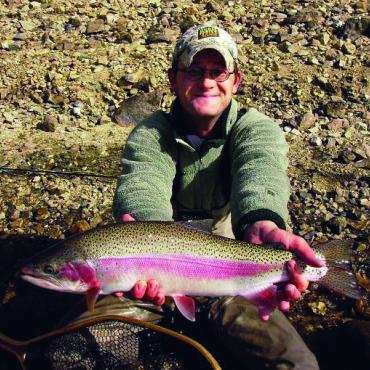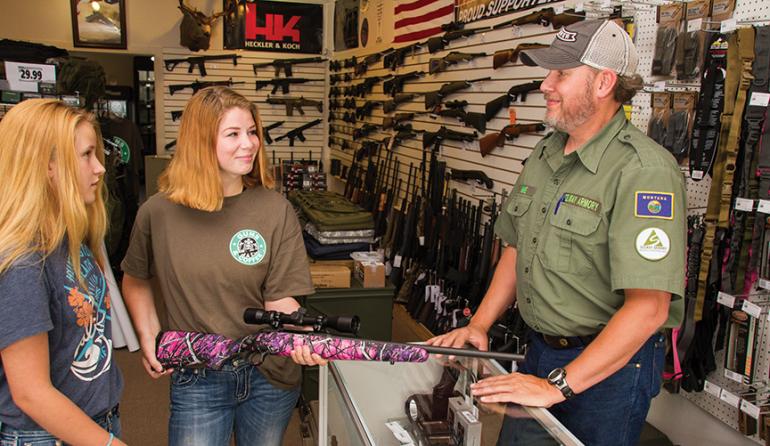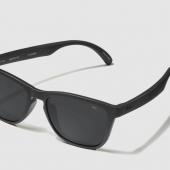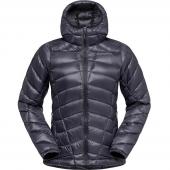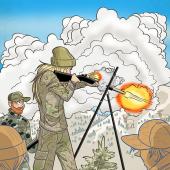Taking Stock
With the variety of big-game animals we have in Montana, picking one all-purpose rifle is no mean feat. Before buying yourself a shootin’ tool, it’s best to ask yourself some basic questions:
- Which species am I hunting and which caliber is best for that species?
- How heavy do I want my rifle to be?
- Do I want to buy new or used?
- What type of scope do I want?
- What is my budget?
Information
The more you know about firearms, ballistics, optics, and the type of game you’ll be hunting, the more confident you’ll be purchasing a rifle. As always, an informed consumer is a happy consumer, and a rifle is a big investment. I highly recommend The Rifle Book by Jack O’Connor. Though slightly dated, this is considered the beginning-gunner’s bible, and it’s actually fun to read. Other good resources include American Hunting Rifles by Craig Boddington and Blue Book of Gun Values, 27th Edition by S. P. Fjestad. These books, in conjunction with internet resources such as gunnersden.com and the various manufacturers’ websites, should give you the necessary information to make a confident rifle choice.
Caliber
Making a broad-based, best-for-every-Tom-Dick-and-Mary rifle-caliber recommendation would be akin to saying that only one kind of beer is suitable to drink. I don’t believe that about beer or rifles. There are literally hundreds of centerfire rifle cartridges, and with the more recent advancements in short-magnum rounds, choices in hunting calibers seem to be more numerous than ever. The best advice I was ever given on rifle calibers was to pick the biggest one you are able to shoot comfortably. The same advice goes for the action of the rifle. Some people swear by single-shots or semi-automatics, while others are religious about bolt-actions. The best choice for you is the one that will allow you to make the kill shot each and every time. An ideal way to try different rifle calibers and actions is to get some of your prospective hunting buddies together for a sight-in day. Have them loan you their rifles for a few shots, and get a feel for how you like or dislike the different guns.
Weight
During the long push up that next ridge where the elkare most certain to be, rifles begin to somehow put on weight. Many manufacturers offer youth or “featherweight” models in a number of popular calibers and styles. These guns are great even for the big-guy hunter looking to cut ounces for horsepacking, or solo foot sojourns deep into the backcountry.
Stock material can also play a factor in rifle heft. Modern rifle stocks are usually made of wood or a synthetic composite material. Synthetic stocks can be slightly lighter than wood; however, that can increase recoil. Again, this is where your comfort comes into play. A rifle should be like an extension of your body—if part of your body is too heavy, or hurts when you use it, the effectiveness becomes impaired.
New or Used
This can be a tricky labyrinth to navigate. You always get what you pay for, be it in product or service. Buy the best rifle you can afford. If the rifle appears new but is used, you may be buying someone else’s problems. Develop a good relationship with your rifle dealers—make sure they are hunters, too, not just shooters. Most reputable gun shops are very interested in keeping you happy, and they will do their best to get you your ideal rifle.
Optics
This is another area where you should buy the best product you can afford. There are two basic types of telescopic rifle scopes: fixed and variable power. Again, consult your gunsmith to match your rifle to the right scope for your hunting needs.
Budget
Here is the real deciding factor on your rifle. Bear in mind that the difference between a pricey rifle and an economy model is often just stock material and finish. A quality hunting rifle with a decent scope should not cost you more than $800. Again, buy the best you can afford; you will always be happy with it.
Kurt Dehmer owns Durty Kurty's guide service. This article originally appeared in Stalk hunting guide, an annual guide to hunting in southwest Montana.

